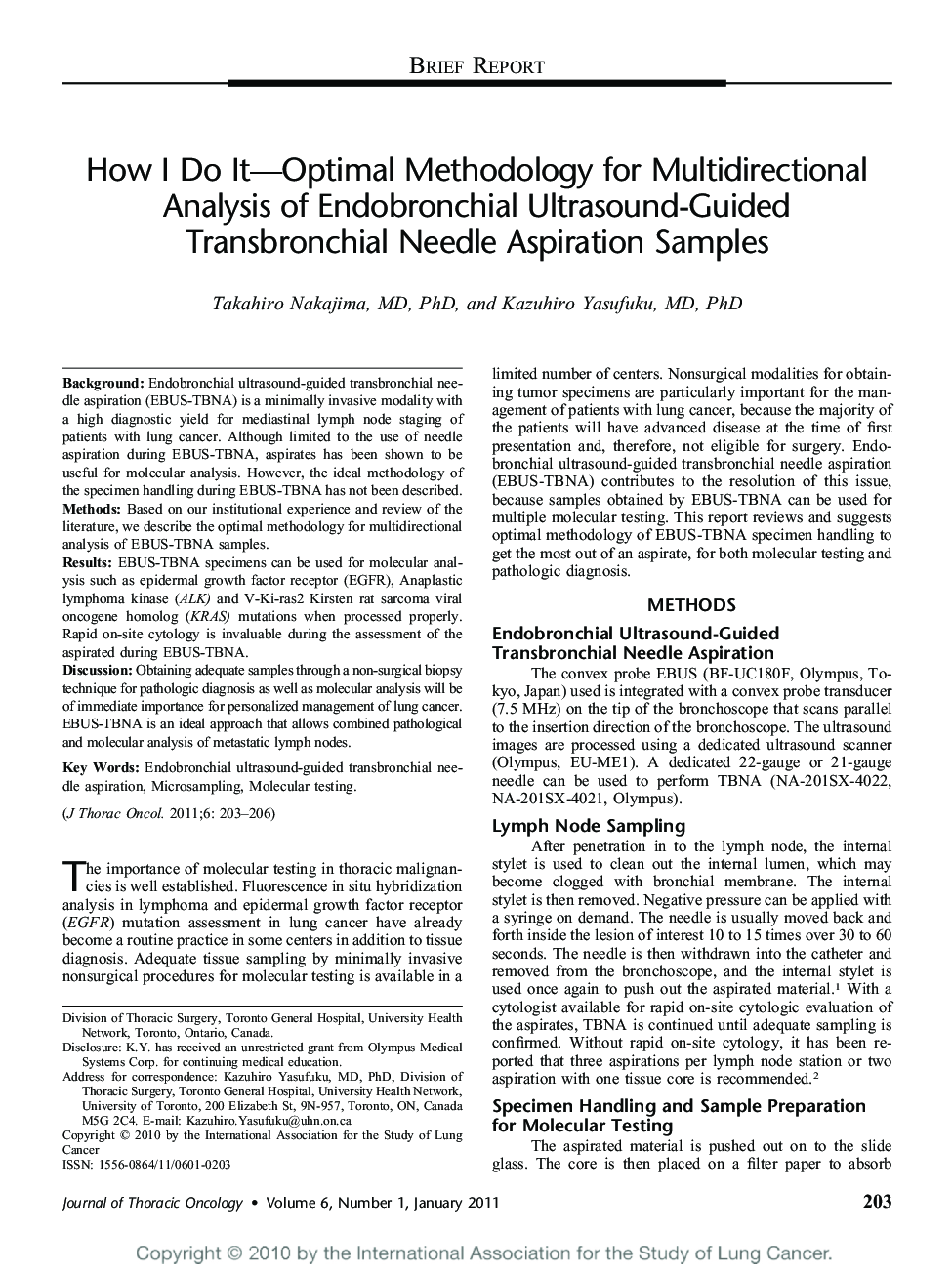| Article ID | Journal | Published Year | Pages | File Type |
|---|---|---|---|---|
| 3990191 | Journal of Thoracic Oncology | 2011 | 4 Pages |
Background:Endobronchial ultrasound-guided transbronchial needle aspiration (EBUS-TBNA) is a minimally invasive modality with a high diagnostic yield for mediastinal lymph node staging of patients with lung cancer. Although limited to the use of needle aspiration during EBUS-TBNA, aspirates has been shown to be useful for molecular analysis. However, the ideal methodology of the specimen handling during EBUS-TBNA has not been described.Methods:Based on our institutional experience and review of the literature, we describe the optimal methodology for multidirectional analysis of EBUS-TBNA samples.Results:EBUS-TBNA specimens can be used for molecular analysis such as epidermal growth factor receptor (EGFR), Anaplastic lymphoma kinase (ALK) and V-Ki-ras2 Kirsten rat sarcoma viral oncogene homolog (KRAS) mutations when processed properly. Rapid on-site cytology is invaluable during the assessment of the aspirated during EBUS-TBNA.Discussion:Obtaining adequate samples through a non-surgical biopsy technique for pathologic diagnosis as well as molecular analysis will be of immediate importance for personalized management of lung cancer. EBUS-TBNA is an ideal approach that allows combined pathological and molecular analysis of metastatic lymph nodes.
